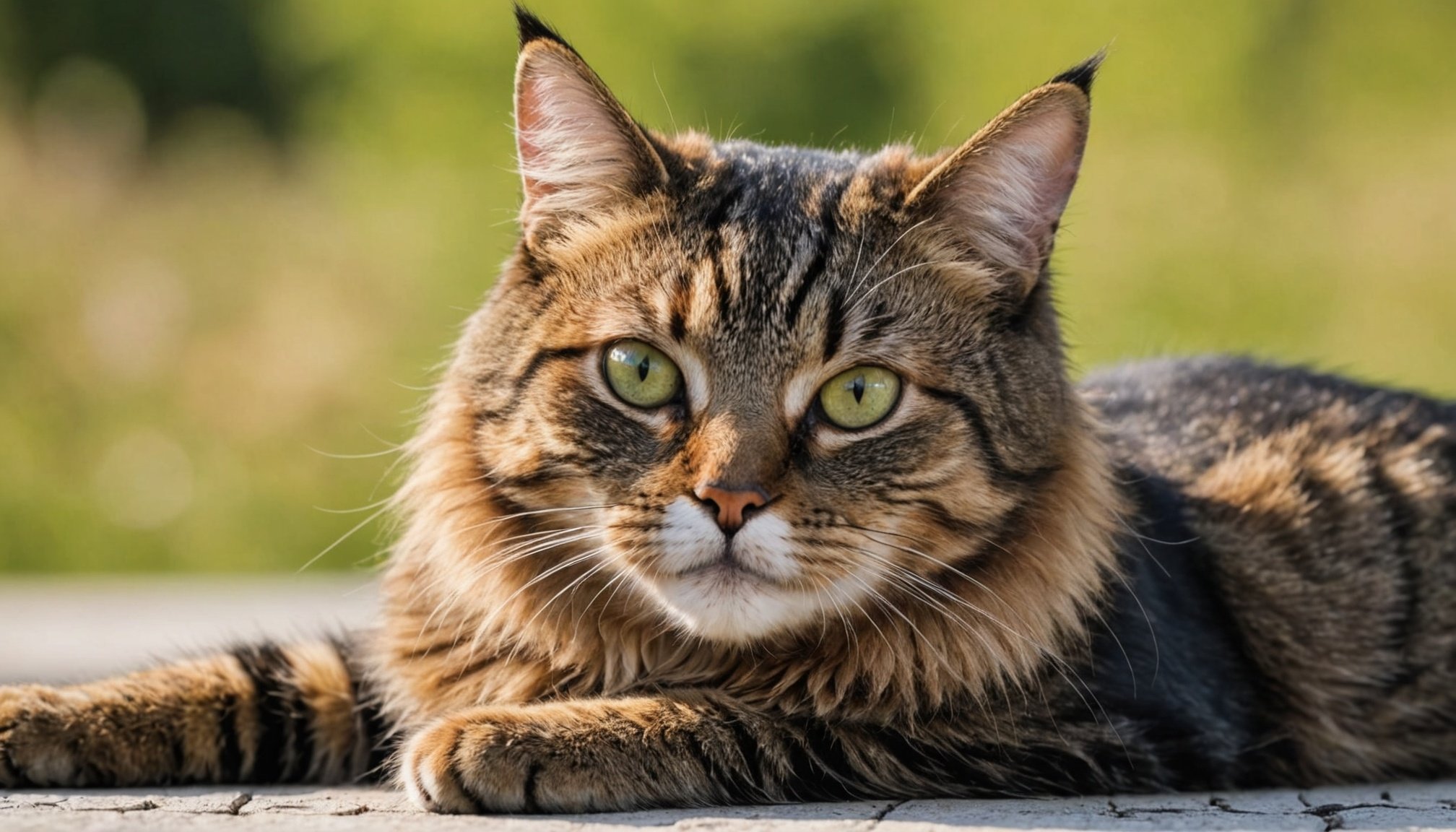Spotting Heat Exhaustion in Cats: Effective Prevention Tips for Pet Owners
As the summer months approach, pet owners need to be vigilant about the health of their furry friends, especially when it comes to heat-related illnesses. Heat exhaustion and heatstroke are serious conditions that can affect both dogs and cats, but cats, being generally more sedentary and less communicative about their discomfort, require special attention. Here’s a comprehensive guide to help you identify and prevent heat exhaustion in your feline companions.
Understanding Heat Exhaustion and Heatstroke in Cats
Heat exhaustion and heatstroke are two related but distinct conditions that occur when a cat’s body temperature rises excessively. Here’s a brief overview of each:
A lire en complément : Essential Tips for Nurturing Your Feline Friend with Arthritis: Best Practices for Cat Care
Heat Exhaustion
Heat exhaustion is a milder form of heat-related illness that can precede heatstroke. It occurs when the cat’s body is unable to cool itself efficiently, leading to an elevated body temperature. If not addressed promptly, heat exhaustion can escalate into heatstroke.
Heatstroke
Heatstroke is a life-threatening condition where the cat’s body temperature becomes dangerously high, often above 104°F (40°C). This can cause severe damage to the cat’s internal organs and even lead to death if not treated immediately.
A lire également : Top Strategies for Safely Introducing Your Cat to a New Baby in the Family
Signs of Heat Exhaustion and Heatstroke in Cats
Recognizing the signs of heat exhaustion and heatstroke is crucial for providing timely aid. Here are some key indicators to look out for:
Early Signs of Heat Exhaustion
- Increased Panting: Cats typically do not pant as much as dogs, so any panting is a sign of distress.
- Restlessness: Your cat may seem agitated or restless.
- Increased Heart Rate: A rapid heartbeat can be a sign that your cat is overheating.
- Drooling: While not common in cats, drooling can be a sign of heat stress.
- Bright Red Gums: This is an indication of increased blood flow to the skin in an attempt to cool down.
Advanced Signs of Heatstroke
- High Body Temperature: Above 104°F (40°C).
- Collapse or Stupor: Your cat may become lethargic or collapse.
- Seizures: In severe cases, heatstroke can cause seizures.
- Vomiting: Cats may vomit due to the extreme heat.
- Diarrhea: Loose stools can also be a sign of heatstroke.
Prevention Tips for Pet Owners
Preventing heat exhaustion and heatstroke is far easier than treating them. Here are some practical tips to keep your cat cool and safe during the hot weather:
Provide Adequate Cooling
- Cool Spaces: Ensure your cat has access to cool, well-ventilated areas. This could be a room with air conditioning or a shaded area outdoors.
- Fans: Use fans to circulate air and make your cat feel cooler.
- Cooling Mats: There are specialized cooling mats available that can help keep your cat cool.
Hydration
- Fresh Water: Make sure your cat always has access to fresh, cool water. Change the water frequently to ensure it remains cool.
- Wet Towels: You can place a wet towel in front of a fan to create a cool breeze or wrap a wet towel around your cat’s body to help cool it down.
Reduce Activity
- Avoid Peak Sun Hours: Keep your cat indoors during the hottest part of the day (usually between 11 AM and 3 PM).
- Evening Walks: If your cat enjoys outdoor time, take them out in the early morning or evening when it’s cooler.
Special Considerations for Flat-Faced Breeds
- Flat-Faced Breeds: Cats with flat faces, such as Persians and British Shorthairs, are more susceptible to heat exhaustion due to their breathing difficulties. They require extra care and monitoring.
Emergency Aid and Treatment
If you suspect your cat is suffering from heat exhaustion or heatstroke, here are the steps you should take:
Immediate Action
- Move to a Cool Location: Immediately move your cat to a cool, shaded area or an air-conditioned room.
- Cool Water: Use cool (not cold) water to wet your cat’s fur. You can also use a wet towel to cool your cat down.
- Avoid Cold Water: Cold water can cause your cat’s body temperature to drop too quickly, leading to other complications.
- Provide Ventilation: Ensure good air circulation around your cat.
Veterinary Care
- Seek Immediate Veterinary Attention: Even if your cat seems to be recovering, it is crucial to seek veterinary care. Heatstroke can cause internal damage that may not be immediately apparent.
- Monitoring: Your veterinarian will monitor your cat’s body temperature, provide intravenous fluids, and offer other supportive care as needed.
Table: Comparison of Heat Exhaustion and Heatstroke in Cats
| Symptoms | Heat Exhaustion | Heatstroke |
|---|---|---|
| Body Temperature | Elevated but typically below 104°F (40°C) | Above 104°F (40°C) |
| Behavior | Restlessness, agitation | Collapse, stupor |
| Physical Signs | Increased panting, bright red gums, drooling | Seizures, vomiting, diarrhea |
| Treatment | Move to cool location, cool water, provide ventilation | Immediate veterinary attention, intravenous fluids, supportive care |
| Severity | Less severe but can escalate to heatstroke | Life-threatening |
| Prevention | Provide cool spaces, hydration, reduce activity | Same as heat exhaustion plus extra care for flat-faced breeds |
Practical Tips and Anecdotes
Keeping Your Cat Hydrated
One of the simplest yet most effective ways to prevent heat exhaustion is ensuring your cat always has access to fresh, cool water. Here’s a tip: place multiple water bowls in different locations around the house to encourage your cat to drink more.
Using Cooling Mats
Cooling mats are a great investment for pet owners, especially during the summer months. These mats are designed to keep your cat cool and can be placed in areas where your cat likes to rest.
Monitoring Your Cat’s Health
Regular monitoring of your cat’s health is crucial. Here’s an anecdote: a pet owner noticed her cat was panting more than usual during a hot summer day. She immediately moved her cat to a cooler room and provided cool water. By acting quickly, she prevented what could have been a serious case of heatstroke.
Heat exhaustion and heatstroke are serious conditions that can affect your feline friends, especially during the hot summer months. By understanding the signs, taking preventive measures, and knowing how to provide emergency aid, you can ensure your cat stays safe and healthy.
As a responsible pet owner, it’s essential to be proactive. Here are some final tips:
- Stay Informed: Keep yourself updated on the weather forecast and plan accordingly.
- Be Vigilant: Monitor your cat’s behavior and physical condition closely.
- Seek Advice: Consult with your veterinarian for personalized advice on keeping your cat cool and safe.
By following these guidelines, you can help your cat enjoy the summer months without the risk of heat-related illnesses. Remember, prevention is always better than treatment, and timely action can save your cat’s life.
Additional Resources
For more detailed information on pet care during hot weather, you can consult the following resources:
- Veterinary Guidelines: Consult your veterinarian for specific advice tailored to your cat’s health and breed.
- Pet Care Websites: Websites like the ASPCA and the Humane Society offer valuable tips and resources on pet care during hot weather.
- Local Animal Shelters: Many local animal shelters provide educational materials and workshops on pet care during summer.
By staying informed and taking the necessary precautions, you can ensure your cat remains healthy and happy throughout the year.











